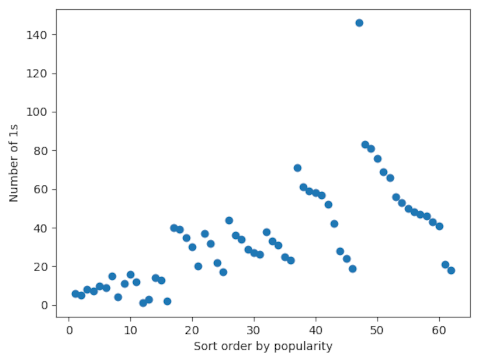A repunit is a number whose base 10 representation consists entirely of 1s. The number consisting of n 1s is denoted Rn.
Repunit primes
A repunit prime is, unsurprisingly, a repunit number which is prime. The most obvious example is R2 = 11. Until recently the repunit numbers confirmed to be prime were Rn for n = 2, 19, 23, 317, 1031. Now the case for n = 49081 has been confirmed.

Here is the announcement. The date posted at the top of the page is from March this year, but I believe the announcement is new. Maybe the author edited an old page and didn’t update the shown date.
Repunit passwords
Incidentally, I noticed a lot of repunits when I wrote about bad passwords a few days ago. That post explored a list of commonly used but broken passwords. This is the list of passwords that password cracking software will try first. The numbers Rn are part of the list for the following values of n:
1–45, 47–49, 51, 53–54, 57–60, 62, 67, 70, 72, 77, 82, 84, 147
So 46 is the smallest value of n such that Rn is not on the list. I would not recommend using R46 as a password, but surprisingly there are a lot of worse choices.
The bad password file is sorted in terms of popularity, and you might expect repunits to appear in the file in order, i.e. shorter sequences first. That is sorta true overall. But you can see streaks in the plot below showing multiple runs where longer passwords are more common than shorter passwords.


Actually, it seems these patterns are an artifact. From what I gather, the file rockyou.txt contains *all* passwords used in accounts with a particular company (now defunct). The passwords are indeed sorted by popularity, but popularity is discrete: the multiplicity of each password is a natural number. So they are binned according to the number of times they appeared. Within each bin, the passwords are sorted in reverse lexicographic order. Presumably, the rightmost streak in the graph represents all repunits that appeared as a password exactly once; the second-rightmost streak contains those that appeared exactly twice, etc. Perhaps we should instead plot just a single point for each bin?